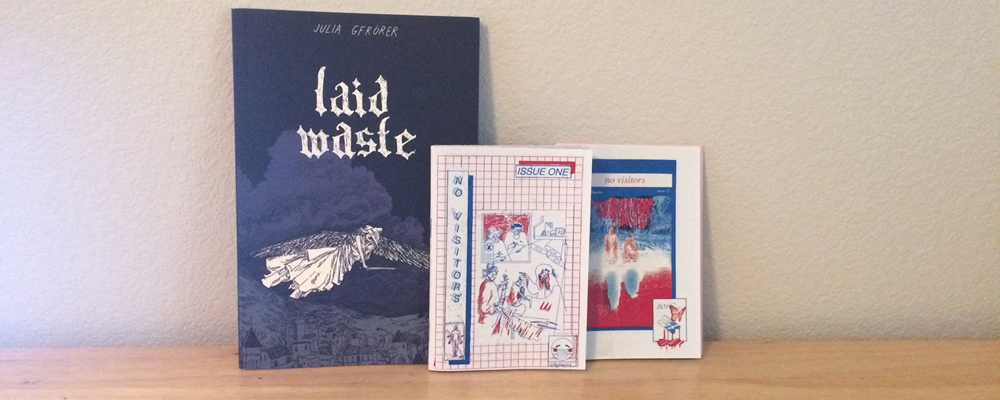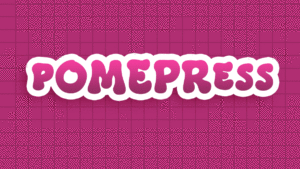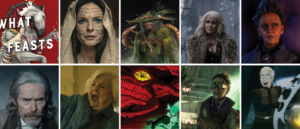This month, I’m welcoming in the new year with two reviews of comics about death and disease. I don’t want to overemphasize the similarities here — Julia Gfrörer’s historical bummer fiction is pretty distant aesthetically from HTMLflower’s semi-fictionalized autobio. But the frailty of human life is central to both, as is an unflinching sympathy around suffering. Given the current debates about the future of healthcare in the U.S., the latter feels especially relevant. What these comics offer isn’t optimism, but it’s important nonetheless.
Laid Waste – Julia Gfrörer

During the mid-14th century, as the Black Death ravaged Eurasia, two important things were happening in parallel: The first was that uncounted millions died horribly of plague (perhaps half or more of Europe’s population). The second was that millions of others had to figure out how to go on living in a world torn apart. Gfrörer’s new book, set in an anonymous peasant village during the plague years, follows a woman bound to that second path. Everyone around Agnès may be dying but she herself, however much she might be tormented by sorrow and guilt, appears destined to survive.
Her fate is set in childhood, as we see in a short, fable-like prologue: One night, while cradling the young Agnès in her arms, Agnès’ mother is visited by the spirit of Death. Death wants the child and promises to protect Agnès from all worldly suffering if her mother will let her go. Agnès’ mother refuses, of course, but is tricked by Death’s brother Sleep and awakens to find that Agnès is not only gone but has already been buried in the church graveyard. Her distraught mother digs her up anyway. Miraculously, the child is still breathing and unharmed. The intro closes with a young Agnès, playing carefree in a field, unaware that she had been stolen back from the land of the dead. The rest of the book asks: Who was right? Agnès’ mother? Or Death?

Laid Waste is a relatively short read but it packs an emotional heft, wielded quietly. While her characters try to distract each other in between rounds of weeping and burying their dead, Gfrörer directs the reader’s focus again and again to small details. Some of them are horrific, like the sequence where two dogs play with a severed human arm. The title page, which depicts two copulating rats (long theorized as vectors of the plague), seems to cruelly mock the comfort which Agnès and another villager, Giles, find in each other’s bodies. But other details reveal an almost surprising tenderness. Gfrörer’s drawings of hands are a focal point for many of these softer feelings. Agnès’s slender fingers express clearly her hopelessness when they freeze, paralyzed by grief, in the middle of kneading dough. Likewise, when she and Giles clasp hands after carrying his wife to a mass grave, their touch conveys more than they can bring themselves to say.

There’s a cinematic quality to Gfrörer’s comics, which helps the reader suspend the sense of artificiality which is common to (and sometimes the joy of) cartooning. The regularity of her four-panels-a-page layouts and her naturalistic drawing style allow us to pretend we’re watching something unfold, rather than viewing something Gfrörer painstakingly rendered for us. In these moments, Laid Waste is heartbreaking.
While a happy ending of some sort, there’s no comforting finality to be found in Agnès’s decision at the end of the book. Though I cheered internally when she takes Gile’s hand and returns to the land of the living, there’s no glossing over the fact that her fate as a survivor is still tragic. Agnès survives “despite everything,” not “happily ever after”. She may still decide it would be better not to survive at all. There’s something pleasantly distant about reading a lot of history (even, say, the Wikipedia page for the Black Death). There’s a sense of being separate and above, of having arrived after everything has safely concluded, of transcending time and fate and tragedy. Gfrörer’s fiction denies us this conceit, grabs us by the collar and zooms all the way in. Then she leaves us there, to find our own way back.
The publisher of Laid Waste, Fantagraphics, really can’t be considered a small press by the same metric as most of the other publishers whose titles I write about in this column. But it’s too late! I already wrote this and you already read it. Anyway, more by the artist, including some legitimately small press editions of stories, can be found at her site.
No Visitors issue one & issue two – HTMLflowers

“no one gives a fuck abt sick ppl” mutters a doodle of a bandaged head. Its eyes are turned away to avoid the viewer’s gaze and it’s unclear whether its statement is accusatory or just a tired explanation. Either way, it’s hard to argue after reading the first two issues of No Visitors. The hospital in HTMLflowers’s on-going(?) zine series is a place of healing, yes, but it’s also a place of professionalized indifference and casual incompetence. It’s a place where food is bad, pain is normalized and simple errors are compounded rather than corrected. And while any healthcare may be better than none at all, trite truths do little to mitigate suffering. Case in point: we’re all dying, but No Visitors’s protagonist, an artist stand-in named Little*, is not only dying a lot faster, he can barely afford to pay for the privilege.

No Visitors is a tiny window into living life with illness. In addition to collecting short comics, the minis collage together drawings, poetry and actual medical forms from the artist’s life. This scrapbook technique isn’t uncommon to zines, but I think it works especially well here, serving as a reminder to the reader of the underlying reality of the stories being told. This is important, not so much because those stories are unbelievable (with exceptions for what I assume are humorous embellishments) but because HTMLflowers’ artwork is so aestheticized.
The way HTMLflowers draws his people, for instance, reminds me a bit of porcelain figurines. It might be the precision of his thin linework or his tendency to favor simplified outlines over the interior details of forms. But there’s a ceramic delicacy in his pencil drawings which makes the characters he depicts seem unreal. This delicacy, however, is not a depiction of weakness or “un-seriousness”. He draws them preciously as a form of emphasis. Their bodies look precious, because he insists their bodies are precious.
The stories in No Visitors are often depressing, but they find humor and celebrate small victories where possible. HTMLflowers has a keen (perhaps hard-won) appreciation for the slapstick of bodily existence. There’s a very funny strip about a masturbation session in a hospital bathroom (ignited by an experience with a nasal swab) that trainwrecks horribly. There’s also a great strip where Little confronts some assholes in a mall food court by pulling a bloody tube from his hand. When the three able-bodied men run, terrified by the realm of bodily fluid and illness that Little lives with everyday, it’s funny but it’s also immensely satisfying.

One of the more harrowing strips in No Visitors features the protagonist undergoing waking surgery to have a PICC line placed in his arm. Because Little’s charts don’t reflect the damage already done to his veins by previous operations and he couldn’t get any of his doctors to take the issue seriously, the normally routine surgery goes awry. Three hours in, Little is lying on the table bleeding and weeping, and his original surgeon is kicked out so that another team can clean up the mess. “I’m not legally allowed to say ‘We’re sorry,’” one of the doctors tells him afterwards, “so I guess I’ll go with ‘Hang in there.’”
The most harrowing strip is probably the very first. It’s one of the few to take place outside the hospital and it follows Little into a supermarket to shoplift a bottle of liquor. Little is feeling guilty about draining his mother’s savings for his medical care and is running through some cold calculations about whether he can budget enough of his welfare check to save something for her before he likely dies at 35. The numbers aren’t great. A few pages later, he loses the welfare income anyway.

If there’s one image from No Visitors that I think will stick with me, it’s this six panel sequence on the back cover of issue two. It encapsulates, neatly, the irony of clinical intimacy and being cared for by people who don’t really care. He might also have drawn a seventh panel, with a final hand demanding payment. With doctors like this, who even wants visitors?
*The artist (legal name Grant Gronewold) has cystic fibrosis, and while I assume that a lot of the strips are based on his own experience, it’s never made explicitly clear where personal history ends and fiction begins.
Both issues of No Visitors can be purchased here and more art can be found on good ol’ tumblr.




